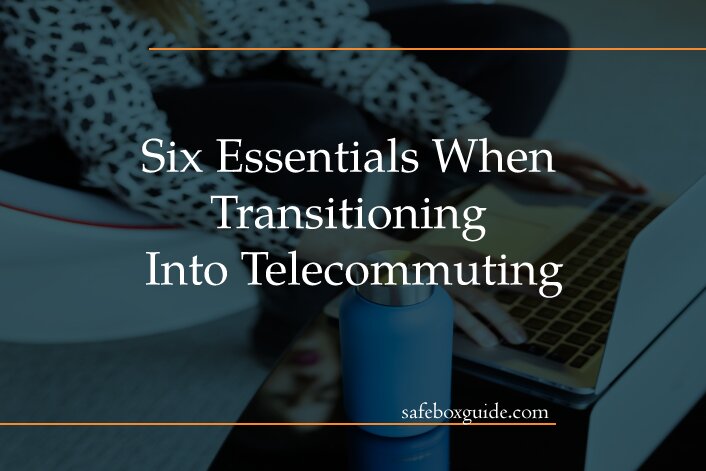
Telecommuting has become increasingly important during the pandemic for a variety of reasons. First, it can help reduce the spread of the virus by allowing people to work from home instead of contact with others in an office setting. Second, it can also help businesses stay operational when many offices are closed or have limited hours. Finally, telecommuting can also help employees feel more connected to their work and less isolated when they may be working from home alone.
There are also other benefits to telecommuting. For example, companies have been known to spend less because of it. It also could lead to a more productive workforce and lower employee turnover rates.
However, some challenges come along with telecommuting, such as maintaining a work-life balance and ensuring that employees are still working when they say they are. These challenges are making transitioning a nightmare for some companies. But by having these essentials, you should be able to transition into telecommuting in no time.
Contents
Clear and Effective Communication
The first step to successfully transitioning into telecommuting is to have clear and effective communication with your employees. You need to let them know what the expectations are and what will be required of them. This includes setting work hours, deadlines, and goals.
You also need to give them away to stay in touch with you and their co-workers. This can be done through email, instant messaging, video conferencing, or even just picking up the phone.
This also means investing in the right tools and technology to facilitate this communication. Many different options are available, such as Slack, Google Hangouts, Zoom, and Skype. Some of these options are free, given that you don’t have too many employees. But if you do, consider putting some money into this software. They are essential for telecommuting.

A Well-organized Home Office
The next step is to ensure that your employees have a well-organized home office. This includes a comfortable chair, a desk, and plenty of storage. They should also have a way to stay organized, such as a planner or calendar.
Technology is also important here. Make sure they have a laptop or computer that is fast and efficient. If ever, feel free to give your employees the money to make their own PC. They might know what kind of PC that can make them efficient for the job, so it’s good to give them that independence.
But most importantly, their office should be free of distractions. This means no television, no kids, and no pets. Feel free to run a seminar for the right home office setup. If they can’t find a way to make their office distraction-free, then they might not be cut out for telecommuting.
Create a Schedule
Another important step is to create a schedule and stick to it. This means setting work hours and sticking to them. Employees should know when they are expected to be working and when they can take breaks.
This also means being flexible with employees’ schedules. If they need to take a break in the middle of the day to take care of a personal errand, that’s okay. Just make sure they make up the time later.
One way to do this is to create a timesheet for employees to fill out. This way, you can see how much time they are working and if they are sticking to their schedule.
The Right Attitude
Your employees need to have the right attitude if they will be successful at telecommuting. This means being self-motivated and disciplined. They need to be able to work independently and stay on task.
If you have employees who are constantly slacking off or not meeting deadlines, you’ll have to enforce some rules. This might mean having them work from the office or coming in for a meeting every once in a while. You might also consider giving them a warning or sending them a written notice. But if things continue, you might also have to strictly monitor them.
You need to trust that your employees are doing their job, even if you’re not there to see it. This can be a hard thing to do, but it’s essential for telecommuting to work.
Test-Run it!
One way to see if your employees are ready for telecommuting is to test-run it. This means having them work from home for a day or two and seeing how it goes. If things go well, you can slowly start transitioning them into telecommuting.
But if things don’t go well, you’ll know that it’s not the right fit for your employees. In this case, you can always go back to the drawing board and try again. Consider doing a hybrid office to see where it leads, and it has worked for some companies.
Telecommuting can be a great way to improve employee productivity and morale. But it’s essential to make sure that your employees are ready for it. By following these steps, you can set your employees up for success.

